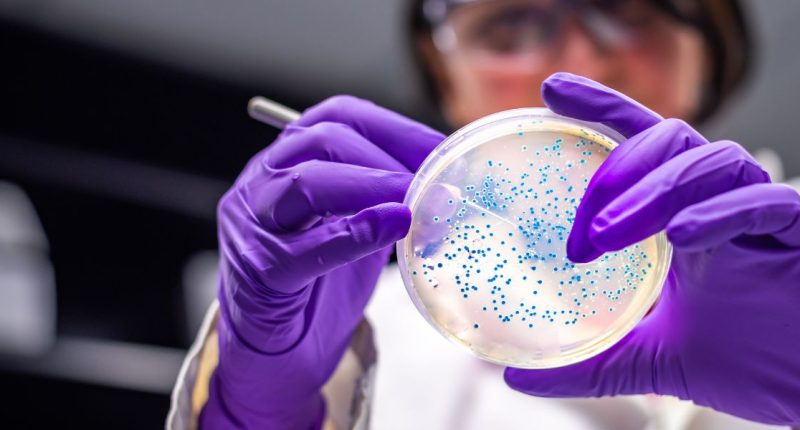- Scientists discovered an “off switch” for the P2X7 receptor, linked to cancer and brain disorders
- Blocking P2X7 receptor function could help treat inflammation-related diseases
- Researchers aim to design drugs that precisely turn off harmful P2X7 activity
New research has revealed that scientists have found the “off switch” on a protein linked to a number of health issues including cancer and brain disorders.
The protein, the P2X7 receptor, is an ion channel which once activated, stays open for a long time. This means that ions (molecules with a net positive or negative electrical charge) can flow into and out of the cell.
This process can trigger inflammation and cell death, which is why scientists think it may be linked to health issues like plaque in arteries, the spread of cancer and neurological problems.
Steven Mansoor, a physician-scientist at Oregon Health and Science University, led this initial research and now his latest study has furthered the understanding of this protein and how it functions.
- Brazil Nuts May Help Reduce Inflammation in Overweight and Obese Women
- Inflammation during childhood is a risk significant risk factor for developing mental health disorders
- Inflammation in early adulthood linked to lower cognition in midlife
Mansoor, along with Mansoor lab graduate student Adam Oken, used advanced imaging techniques to examine the structure of the P2X7 receptor after it is bound to five known antagonists and a newly discovered one. Antagonists are molecules that bind to the receptor and stop it from activating, blocking receptor function.
The research has shown how the antagonists interact with the receptor to prevent it from functioning, revealing there are at least three types of blockers shallow, deep and starfish.
Understanding the starfish blocker in particular could help to develop better treatments for conditions linked to the P2X7 receptor.
Mansoor said: “There are seven different subtypes, P2X1 through P2X7, that each play important roles in various aspects of cellular physiology ranging from processes in the central nervous system to aspects of the cardiovascular system and the immune system.
“We are really interested in understanding how the seven P2X receptor subtypes differ from each other at a molecular level. This is important because if you wanted to design a drug that blocks the activation of P2X7, you do not want to affect the function of other receptors.”
An earlier study, with Oken as the first author, examined the structure of the P2X7 receptor bound to a strong activator, BzATP. The research identified three different parts of the receptor which are important in its strong response to BzATP, helping scientists to further understand how P2X receptors turn on.
- High salt intake and pro-inflammatory diet associated with type 2 diabetes
- Gut inflammation: Blastocystis ST7 metabolism can trigger gut disease
- Yoga can stop cancer spreading by reducing inflammation
The latest study goes one step further by identifying how to turn the receptor off. Now the team is hoping to develop molecules that can precisely control the receptor’s function.
Oken explained: “When P2X7 is turned on, it signals for the release of unsafe molecules that trigger inflammation. Our goal is to understand how to turn off P2X7 activity by designing ligands that bind very tightly to turn off harmful P2X7 signalling. Eventually, this can lead to new therapeutics that have the potential to treat heart disease, cancer and other inflammatory diseases.”
Two years ago, Mansoor began to develop more effective drugs through his understanding of how P2X receptors work at the molecular level.
His latest research continues his work to develop medication which stops the activation of receptors involved in inflammatory diseases.




